|
Bidston Village Church
The former structure of St Oswalds was in existence by 1291, when it
was valued at £5.6s.8d and the curvilinear nature of the churchyard
suggested an early date.
|
|
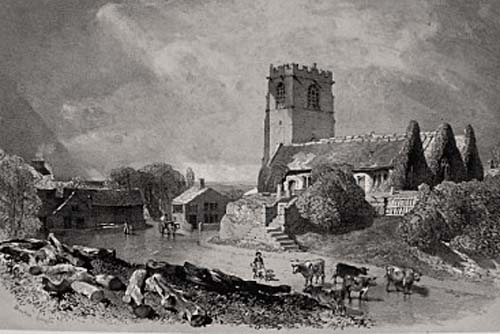 |
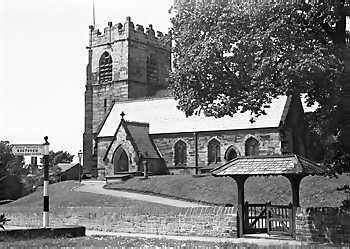 St Oswald's |
|
|
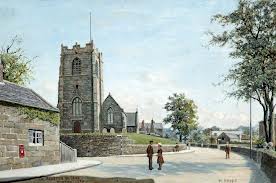 |
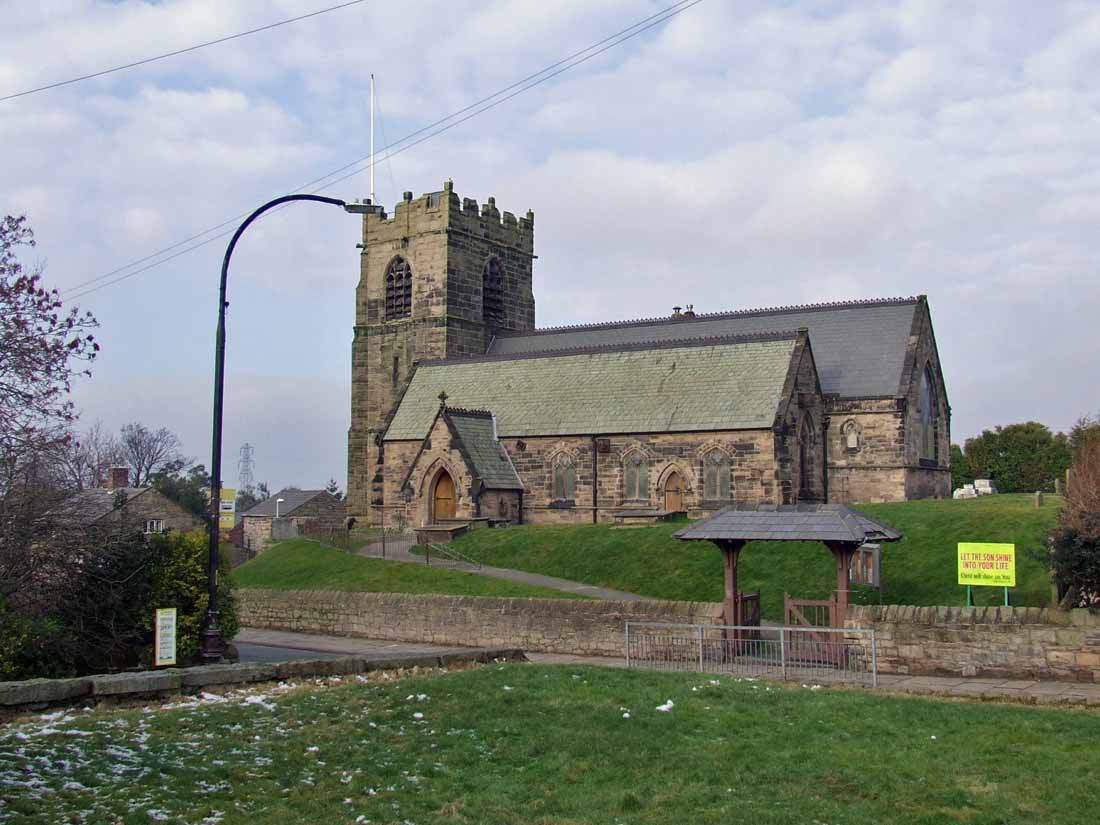 Taken from the WW1 Memorial - Feb 4th 2009 |
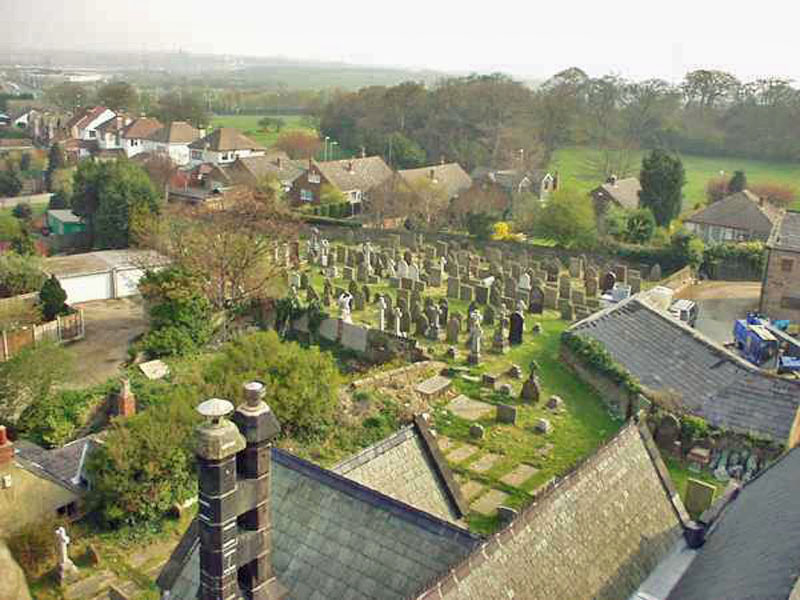 A View from the church tower and below |
| Above: St Oswald's Church in Bidston Village. I can remember the Lych Gate, through which you entered the church. St Oswald's Church, has been standing here since 1856, but there is evidence of earlier churches on this site going back to the 12th Century and possibly before. The tower dates back to 1520. | 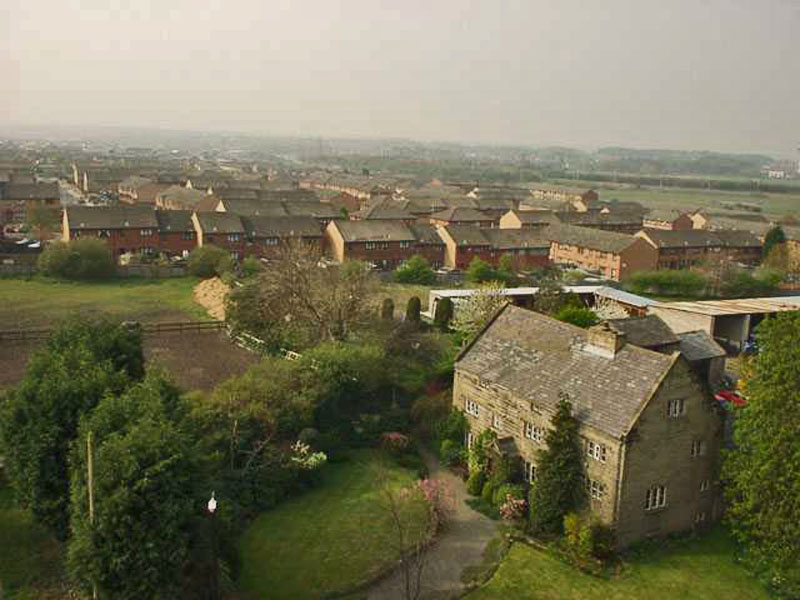 |
|
In August 2016 I was sent a series of images, probably never before seen, of Birkenhead and a couple of Bidston. Here is one of them of the Church. The original was in sepia. I changed it to black and white so that I could enhance a very faded image. Image belongs to Alan Perry. |
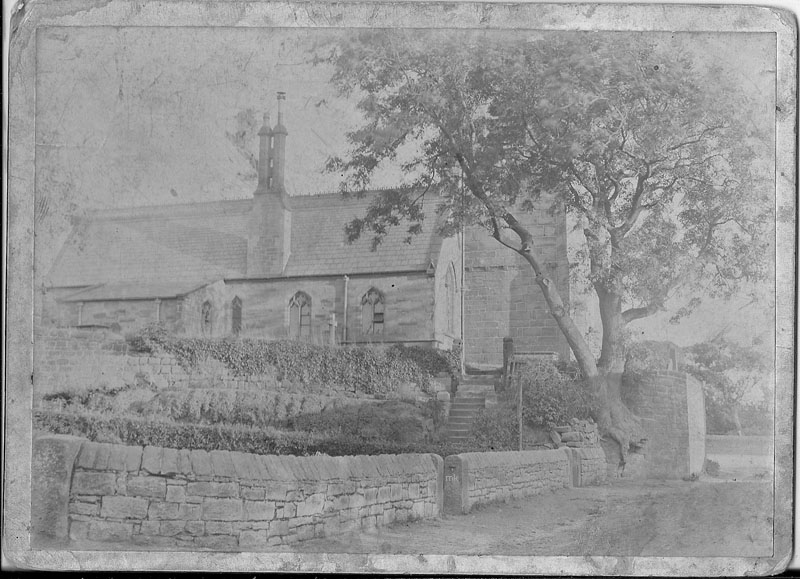 |
|
Names amongst the gravestones include Mutch and Povall. (Jan 29th 2011) Images below
|
|
|
|
Bidston Village has appeared in records since Doomsday, but evidence for occupation goes back to the Stone Age. The Village still maintains its medieval shape of church, farms, village green and manor house. The Village has a rich heritage, and has been involved in several key points of British history. At one time, the village was owned by the Stanley family, who became Earls of Derby. The 6th Earl of Derby has been closely associated with William Shakespeare and is credited with bringing Shakespeare to Bidston as a member of a band of actors. As Royalists, the Stanley family forfeited their lands during the Commonwealth, but on the Restoration of the monarchy the village came into the possession of the Vyners family. It is because of the Vyner family that the village has remained in the style of a Medieval village, and in the late 20th century was designated as a Conservation Area. It is known that a church was in existence in Bidston when Birkenhead Priory was founded in the middle twelfth century. The church was re-built about the middle of the thirteenth century and the tower added in 1520. This is the tower which still stands today and which is the only part of the present-day church dating from before 1856, when a further rebuilding took place, the previous structure having fallen into disrepair. It is likely that the tower contained bells in the sixteenth century and that these were replaced by a ring of three cast in 1615. One of these is said to have come originally from the Shrine of St Hildeburgh on Hilbre Island, which lies off the north-west tip of the Wirral Peninsula at the north end of the Dee Estuary. These bells were replaced by a ring of five, cast by Mears and Stainbank, in 1868. The treble was added in 1882. The present dedication of the church - Saint Oswald - arises from an inscription on one of the old bells. The original dedication was not known and it was assumed from this inscription that the patron saint was Oswald. The church was therefore formally dedicated to Saint Oswald in 1882. However, since the bell in question had actually been brought from St Oswald's Church in Chester, it appears that the assumption may have been unfounded. The church lies in the heart of the village of Bidston and can be approached from one of two directions. Travelling from Birkenhead in the east, the visitor passes Bidston Hill and Observatory and descends to see the church at the bottom of the hill, sitting on a steep grassy bank and surrounded by farm buildings - a prospect which has remained largely unchanged for over a hundred years. From the south-west, the tower is visible for a mile or so from the road which runs alongside the area now known as Beechwood and which was named the Ford Estate when it was built in the early 1970s to re-house the inhabitants of the North End of Birkenhead when a large number of houses were demolished. It was the creation of the Ford Estate which significantly altered the nature of the parish of Bidston. The parish boundaries originally encompassed a large part of North Wirral - Moreton, Saughall Massie, Claughton and Birkenhead, as well as Bidston itself. Bidston became separated from its smaller townships at the beginning of the nineteenth century, when Birkenhead was boosted by the flourishing sea trade and effectively became a suburb of Liverpool. In 1801, Bidston had 199 inhabitants and Birkenhead 110. By 1831, Bidston's population had risen only gradually to 252 while Birkenhead's had mushroomed to 2,569. With the contracting of its boundaries, the parish, although still covering a large area, retained its rural character - a character which still prevails today in the centre of the village. Bidston Hall, Church Farm and Yew Tree Farm all date from the seventeenth century; across the road from the church is Stone farm, which was formerly the Ring o' Bells Inn with a swinging signboard depicting the ringers at work. Unfortunately, the last landlord, Simon Croft, was also one of the inn's best customers and did little to discourage drunken behaviour, which distressed the churchgoers and led to the inn being closed down in 1868. This left the village without any licensed house for more than a century. The twentieth century has seen various housing estates spring up throughout the parish - Birkenhead North End, part of Noctorum, Ballantyne and Beechwood. The population of the parish now numbers some 10,000. The presence of these housing estates persuaded the church to reconsider its role of ministry in the community. The parish hall having been destroyed by fire, there were few facilities for the parish population, and it was decided to redesign and refurbish the interior of the church so that it could be used for community activities. This was completed in 1988 at a cost of £120,000. At the time of writing, the Community Project is celebrating its tenth anniversary. The church has had a stable band of ringers almost continuously since the inception of the Chester Diocesan Guild in 1887, though little is known about the ringing before that date. A notable figure was William Wilcox, who learned to ring in 1883 and took over the tower captaincy in 1889, a position which he held until 1931. He conducted the first peal at Bidston by a local band in 1911. Mr Wilcox and his wife ran a sweet and tobacco business from their thatched cottage in School Lane which had once been the village school - sadly, it was destroyed in the Second World War. After his retirement from the captaincy he moved to Essex where he died in 1947, but he is buried in Bidston churchyard. Jim Smith followed him as tower captain from 1931 until 1939, and Banky Pemberton, having learned to ring shortly after the War ended, was given the captaincy in 1947 and held it, like William Wilcox before him, for over forty years. The refurbishment of the church, however, had repercussions for the bellringers. Until 1988, the bells had been rung from the ground floor of the church. This area was now used for kitchen facilities, and so the ringing chamber was moved upstairs to a new room which doubled as an office. Because of the angle at which the ropes were dragged across the room between the new ringing-chamber and the bell-chamber, they were very difficult to ring and well nigh impossible for teaching learners, and so regular ringing stopped in 1991. In 1994 work was started to make the bells ringable from the room further up the tower, immediately below the bells. Interestingly, this turned out to have been considered in the 1920s but rejected because of the presence in this room of the motor for the church organ. By the end of 1994, the wheels had been turned on two of the bells so that the ropes - apart from the treble - fell in a circle, and a new band was taught to ring in early 1995. By the spring of 1996, the treble had been re-hung in a different position to perfect the circle. All of this work was carried out by Tommy Morgan, a ringer from St Saviour, Oxton. Ringing has now continued uninterrupted since 1995. Although some beginners have come and gone, we now have a solid band of eleven, drawn from the congregation. We have received the wholehearted support of clergy and parishioners over the last four years, and for their part in the rebirth of Bidston ringing we are very grateful. Written by Peter Hughes on http://www.wirral8.f9.co.uk/wirral/bidrep.htm dated 1999. |
|
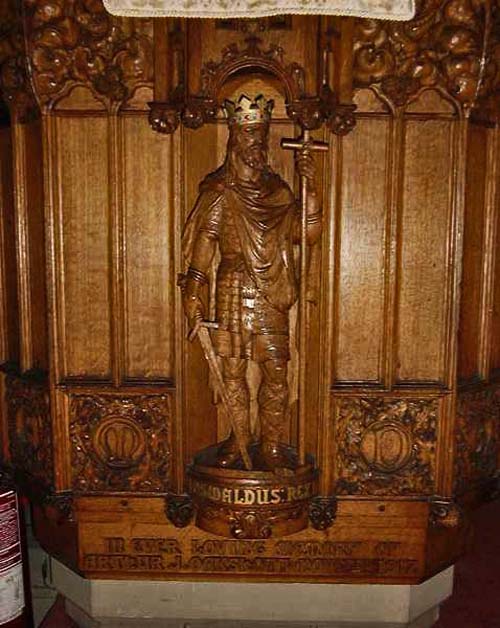 St Oswald |
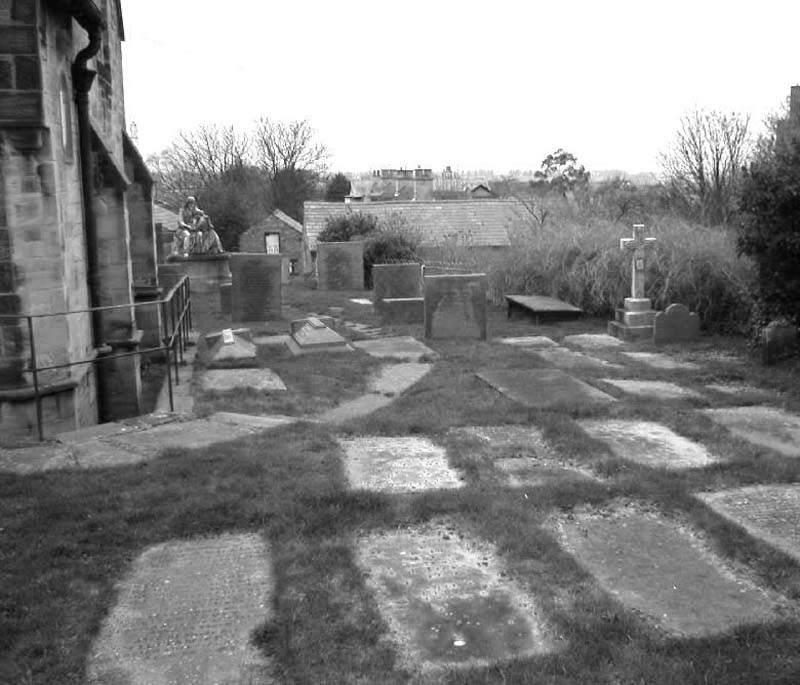 Part of the graveyard, looking north towards Mockbeggar Wharf and Liverpool Bay. 2003 |
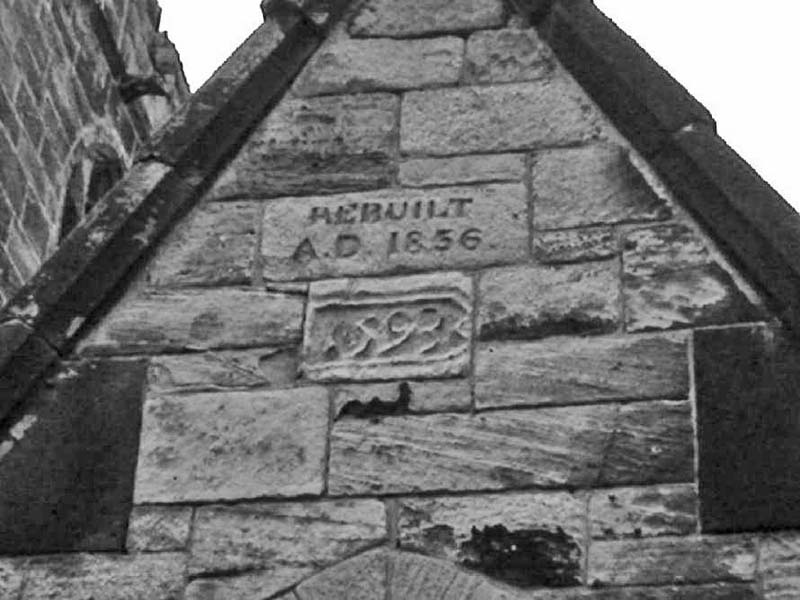 Date stone above Church doorway. 2003 |
|
Parish Church of St Oswald. 2003 |
|
|
2003 |
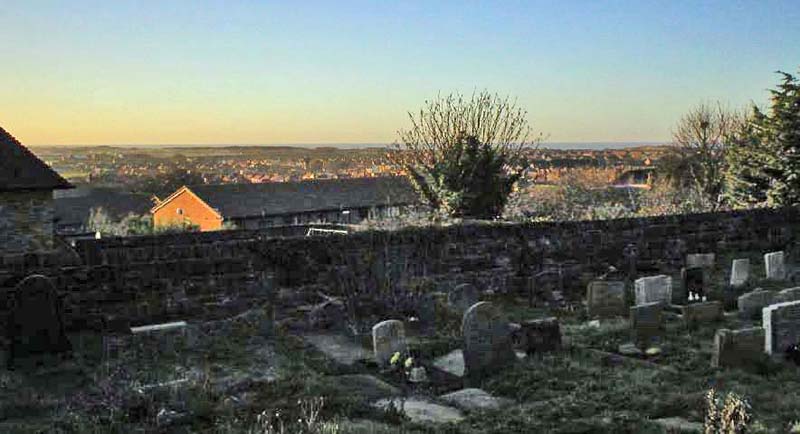 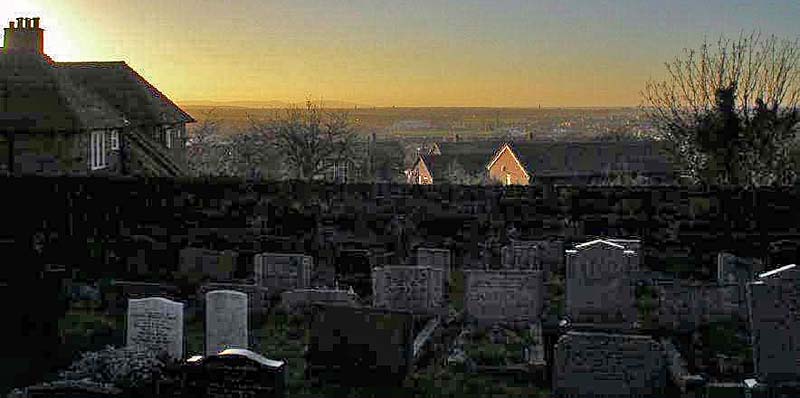 |
|
View From
Bidston Church across Leasowe and Moreton to Wales and in the lower, |
|
|
http://www.wirral360.com/ Virtual Wirral http://www.youtube.com/watch?v=mDH6HhI_P0I&feature=related The Bidston Tunnels
Sources and Reference links
http://www.vwlowen.demon.co.uk/wirral/bidston.htm My special thanks to Kenneth Burnley for his permission: Portrait of Wirral by Kenneth
Burnley Hale Publications |
|